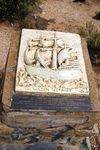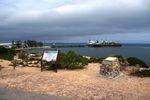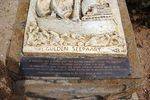
Home » Themes » Landscape » Exploration
"Het Gulden Seepaart"Print Page 
François Thijssen or Frans Thijsz (died 13 October 1638?) was a Dutch explorer who explored the southern coast of Australia.
He was the captain of the ship 't Gulden Zeepaerdt (The Golden Seahorse) when sailing from Cape of Good Hope to Batavia. On this voyage, he ended up too far to the south and on 26 January 1627 he came upon the coast of Australia, near Cape Leeuwin.
Thijssen continued to sail eastwards, mapping more than 1500 kilometres of Australia's coast. He called the land 't Land van Pieter Nuyts (The Land of Pieter Nuyts), referring to the highest VOC official aboard his ship. Part of Thijssen's map shows the islands St Francis and St Peter, now known collectively with their respective groups as the Nuyts Archipelago. The ship, which had been built in Middleburg and left Zeeland on 22 May 1626, finally arrived in Batavia on 10 April 1627. Thijssen's observations were included as soon as 1628 by the VOC cartographer Hessel Gerritsz in a chart of the Indies and New Holland.
This voyage defined most of the southern coast of Australia and discouraged the notion that "New Holland", as it was then known, was linked to Antarctica. Much later, Thijssen's findings led Jean Pierre Purry to propose a Dutch colony on the mainland there in 1717-18.
Location
| Address: | West Terrace, Pinky Point, Thevenard, 5690 |
|---|---|
| State: | SA |
| Area: | AUS |
| GPS Coordinates: | Lat: -32.144927 Long: 133.643633 Note: GPS Coordinates are approximate. |
Details
| Monument Type: | Monument |
|---|---|
| Monument Theme: | Landscape |
| Sub-Theme: | Exploration |
| Approx. Event Start Date: | February-1627 |
Dedication
Het (sic) GULDEN SEEPAART
In February 1627 A Dutch Ship "Het Gulden Seepaart" Under The Command Of Francois Thijussen Landed Along This Coast.
He Charted The Main Islands And Named Them St. Francis And St. Peter.
He Mapped The Coast And Called It Peter Nuijtsland
In Honour Of His Supercargo
(This Plaque Has Been Donated By The Dutch People Of South Australia)






